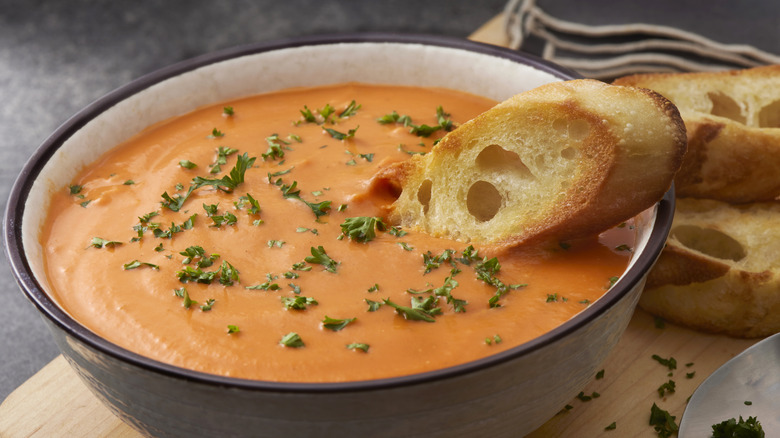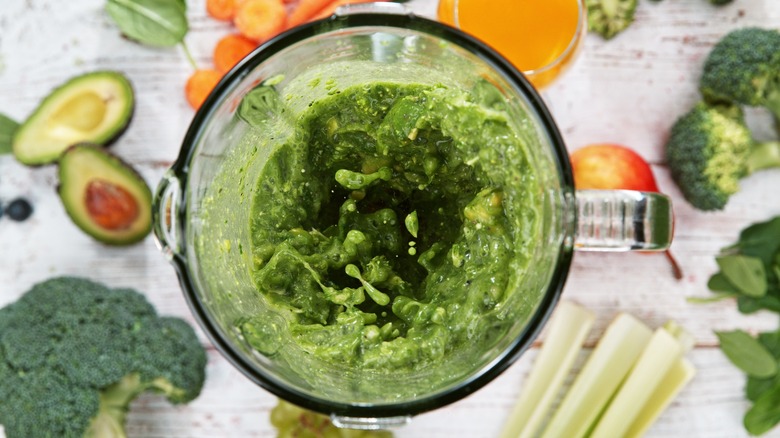A Blender Is The Key To Better Canned Soup
When crafting a soup from scratch, we can control the broth's flavor and play around with its texture and thickness. Without a blender, the consistency of canned soup must be accepted for what it is. Oftentimes, it leaves much to be desired. However, with a blender in our arsenal, we can transform any mediocre can of soup into a velvety puree or a thick yet delightfully chunky dish that screams, "I didn't pour this out of a can!"
While this blending technique may turn a beautiful homemade beef stew into something that resembles baby food, it is an incredible hack for giving a little more life to canned soups that contain beans and starchy vegetables like potatoes, peas, butternut squash, and corn. With the help of a blender, ingredients like these can be easily pulverized, creating a smooth mixture that rivals even the best homemade potato and leek soups. When you're in the mood for a bisque, the entire can of soup can be added to the blender and whipped until smooth. However, if you like a little more bite, try heating the entire can of soup before transferring half of it to the blender. After half of the soup has been sufficiently smoothed, it can be reintegrated into the contents of the pot, creating a soup with a rich and creamy base while leaving some chunkier morsels to sink your teeth into.
Using a blender for thicker soup
If mouth feel isn't the only thing that's lacking in your canned soup, you can enhance its texture and flavor in one fell swoop by blending half of it with a spoonful of nut butter or miso paste or adding some leftover mashed potatoes or roasted cauliflower to the mix. Once blended, this will give the soup with a thick bisque-like texture (sans dairy) and a depth of flavor you won't usually get from canned soup. You may even try blending up a can of lentil soup or add some cooked lentils to the blender with any canned soup for a boost of starchy goodness. The health-conscious among us can also up the ante on the nutritional value while providing some additional texture by blending in fresh produce like spinach, kale, zucchini, or carrots into the soup.
For the best results, try this hack using broth-based soups, as the extra liquid allows the ingredients to become fully broken down and integrated. While a countertop blender works wonders, a handheld immersion blender can work just as well to help you achieve that coveted creaminess — without all the trouble of transferring the soup to the blender and back. It also allows you more control over the texture, so you can perfectly tailor the soup to your taste.

